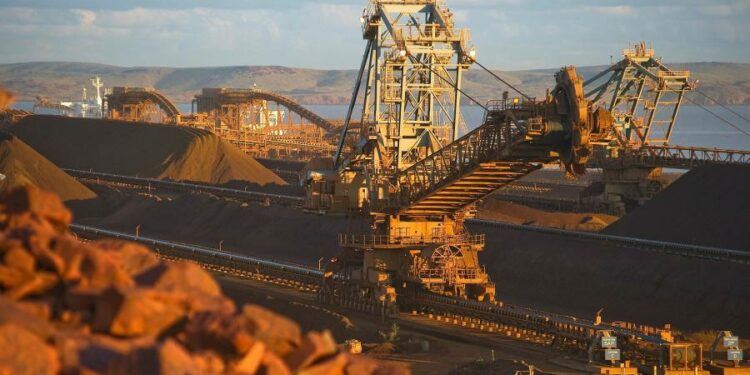Rio Tinto’s flagship iron ore business had a “challenging” start to the year as it struggled to bring on new projects to replace ageing mines because of labour shortages and supply chain quality problems.
The company said its operations in the Pilbara region of Western Australia had exported 71.5mn tonnes of the steelmaking commodity in the three months to March, down 8 per cent on the same period last year. Analysts had expected Rio, which is listed in London and Sydney, to ship as much as 76mn tonnes.
The performance highlights the challenges facing Rio chief executive Jakob Stausholm as he seeks to restore the miner’s reputation for operational excellence.
“The operational troubles for Rio Tinto continue,” said Tyler Broda, an analyst at RBC Capital Markets.
Shares in Rio Tinto were the biggest faller in the FTSE 100 on Wednesday, down 2.8 per cent at 5,926p.
The Pilbara iron ore business is Rio’s main source of profits but the company has struggled to hit output targets and needs to complete several new mines to improve product quality.
In Wednesday’s trading update, Rio said the commissioning of its Pilbara replacement projects had continued to be hit by labour shortages, while progress at its new $2.6bn Gudai-Darri mine had been hampered by supply chain issues including “steel fabrication quality”.
Rio expects the main processing plant at Gudai-Darri to be operational by the end of June and reiterated its full-year guidance to ship between 320mn and 335mn tonnes of Australian iron ore in 2022.
“Production in the first quarter was challenging as expected, re-emphasising a need to lift our operation performance,” said Stausholm.
Rio’s problems in iron ore can be traced back to 2013 and a decision to delay spending on new mines to replace ageing pits. As a result, the company has produced an increasing amount of lower-grade iron ore and less of its best-selling product, Pilbara Blend.
“As we ramp up Gudai-Darri, our iron ore business will have greater production capacity and be better placed to produce additional tonnes of Pilbara Blend in the second half,” said Stausholm.
Rio’s production report came as Brazilian rival Vale also reported a very weak start to the year.
Heavy rains and operational problems resulted in a 6 per cent decline in production to 64mn tonnes in the first quarter compared with the same period a year ago.
Like Rio, the company reiterated its full-year production guidance of 320mn to 335mn tonnes. although analysts said it would be a struggle to achieve.
“It will be an uphill battle for Vale to hit its targets,” said Christopher LaFemina, an analyst at Jefferies.
However, the lacklustre performance of both Rio and Vale should provide further support for iron ore prices, which have proved remarkably resilient this year in spite of concerns about the impact of Covid-19 lockdown restrictions in China.
Iron ore was trading at just under $150 a tonne on Wednesday, up from $119 at the start of the year. China is the world’s biggest producer of steel.
Rio said Beijing was “transitioning from tightening to easing policies following a slowdown in the second half of 2021”, with “mild pro-growth measures” in place to support property, infrastructure and consumption.
“We expect commodity demand to be underpinned by the global energy transition which is creating new demand for our products and near-term Chinese policies that are becoming more growth-focused,” it said.











